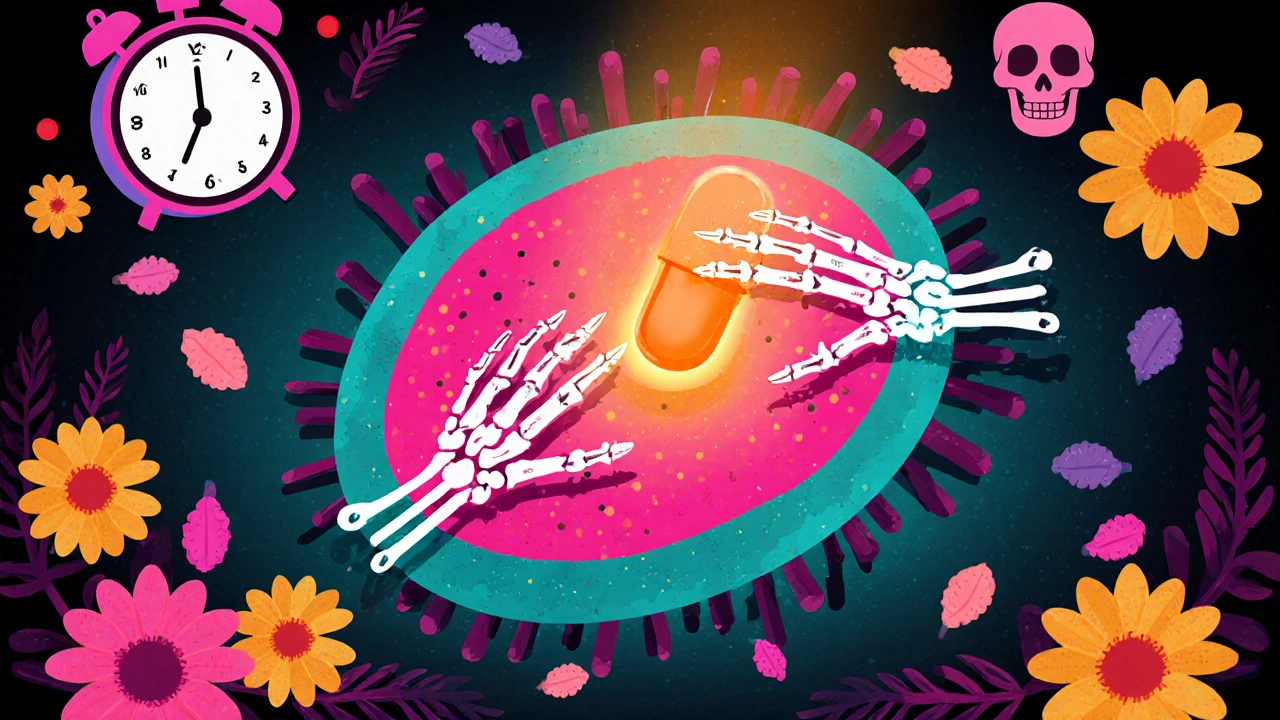Ribociclib Resistance: Why It Happens and What Comes Next
When Ribociclib, a CDK4/6 inhibitor used to treat hormone receptor-positive breast cancer. Also known as Kisqali, it works by blocking proteins that help cancer cells multiply, stops working, it’s not just a setback—it’s a turning point. Many patients with advanced breast cancer start on Ribociclib alongside hormone therapy, and for months or even years, it keeps the disease under control. But then, something changes. The cancer finds a way around it. That’s Ribociclib resistance, and it’s one of the biggest reasons treatment plans need to shift.
This isn’t random. Resistance usually happens because the cancer cells evolve. They might overproduce the very proteins Ribociclib tries to block, or they activate backup pathways that let them keep growing. Some tumors start making more estrogen receptors, others switch to using different signaling molecules like PI3K or MAPK. CDK4/6 inhibitors, a class of drugs that includes Ribociclib, palbociclib, and abemaciclib all face similar resistance patterns, but each patient’s tumor behaves differently. And because these drugs are often paired with hormone therapies like letrozole or fulvestrant, resistance can also come from changes in how the cancer responds to estrogen—this is called endocrine resistance. The two problems often feed each other.
Doctors don’t just guess why resistance happened. They test tumor samples, look for genetic mutations, and track how the cancer is behaving over time. Some patients show changes in the RB1 gene, which Ribociclib depends on to work. Others develop new mutations in ESR1, the gene that codes for the estrogen receptor. These aren’t just lab findings—they directly shape what comes next. If RB1 is broken, Ribociclib won’t help anymore. If ESR1 is mutated, switching hormone drugs might make sense. And if the PI3K pathway is active, adding a drug like alpelisib could be the next step.
What’s clear is that resistance doesn’t mean giving up. It means adapting. New trials are testing combinations—Ribociclib with newer hormone drugs, with PI3K inhibitors, or even with drugs that target the tumor’s environment. Some patients respond to switching to another CDK4/6 inhibitor, like abemaciclib, even after Ribociclib fails. Others benefit from chemotherapy or targeted therapies based on their tumor’s specific profile. The key is knowing what’s driving the resistance in your case.
Below, you’ll find real-world comparisons and insights from patients and doctors dealing with similar situations. From how different breast cancer drugs stack up against each other, to what happens when hormone therapy stops working, these posts give you the practical details you need—not just theory, but what’s actually being done in clinics today.
- Archer Pennington
- 7
Understanding Ribociclib Resistance and Its Clinical Implications in Cancer Treatment
Explore why ribociclib stops working in some breast cancer patients, learn the molecular reasons behind resistance, and discover practical strategies to overcome it.
Read more
